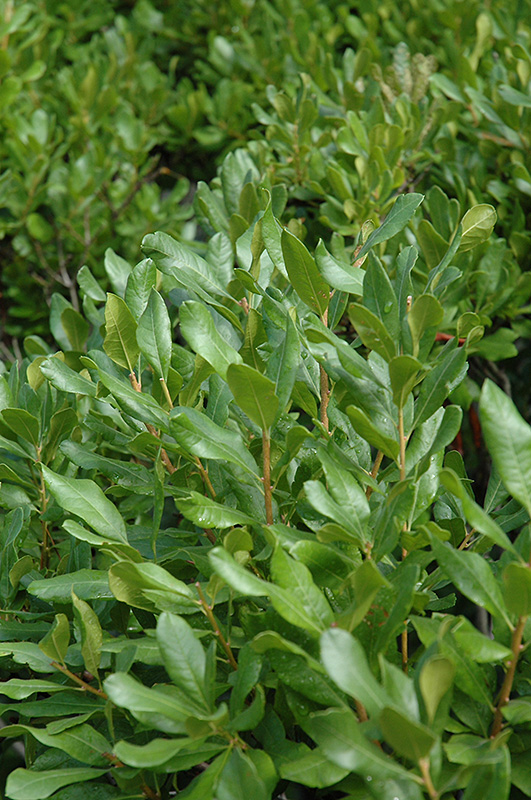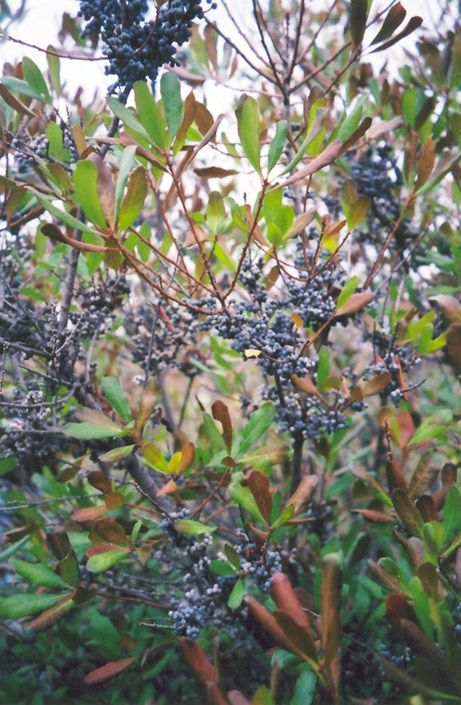PLANT FINDER
Height: 9 feet
Spread: 8 feet
Sunlight:
![]()
![]()
Hardiness Zone: 4a
Other Names: Candleberry
Description:
An interesting native shrub known for its unusual small, waxy gray fruit which tightly hug the branches through the winter; thrives in poor, sandy or gravely acidic soils, some suckering, excellent for massing; fruit are often used for candles
Ornamental Features
Northern Bayberry has dark green deciduous foliage on a plant with a round habit of growth. The fragrant narrow leaves do not develop any appreciable fall color. It produces gray berries from mid fall to late winter. The smooth khaki (brownish-green) bark adds an interesting dimension to the landscape.
Landscape Attributes
Northern Bayberry is a dense multi-stemmed deciduous shrub with a more or less rounded form. Its average texture blends into the landscape, but can be balanced by one or two finer or coarser trees or shrubs for an effective composition.
This shrub will require occasional maintenance and upkeep, and is best pruned in late winter once the threat of extreme cold has passed. Deer don't particularly care for this plant and will usually leave it alone in favor of tastier treats. Gardeners should be aware of the following characteristic(s) that may warrant special consideration;
- Suckering
Northern Bayberry is recommended for the following landscape applications;
- Mass Planting
- Hedges/Screening
- General Garden Use
Planting & Growing
Northern Bayberry will grow to be about 9 feet tall at maturity, with a spread of 8 feet. It tends to fill out right to the ground and therefore doesn't necessarily require facer plants in front, and is suitable for planting under power lines. It grows at a medium rate, and under ideal conditions can be expected to live for approximately 30 years.
This shrub does best in full sun to partial shade. It does best in average to evenly moist conditions, but will not tolerate standing water. It is very fussy about its soil conditions and must have sandy, acidic soils to ensure success, and is subject to chlorosis (yellowing) of the foliage in alkaline soils, and is able to handle environmental salt. It is highly tolerant of urban pollution and will even thrive in inner city environments. This species is native to parts of North America.
A NetPS Plant Finder tool



